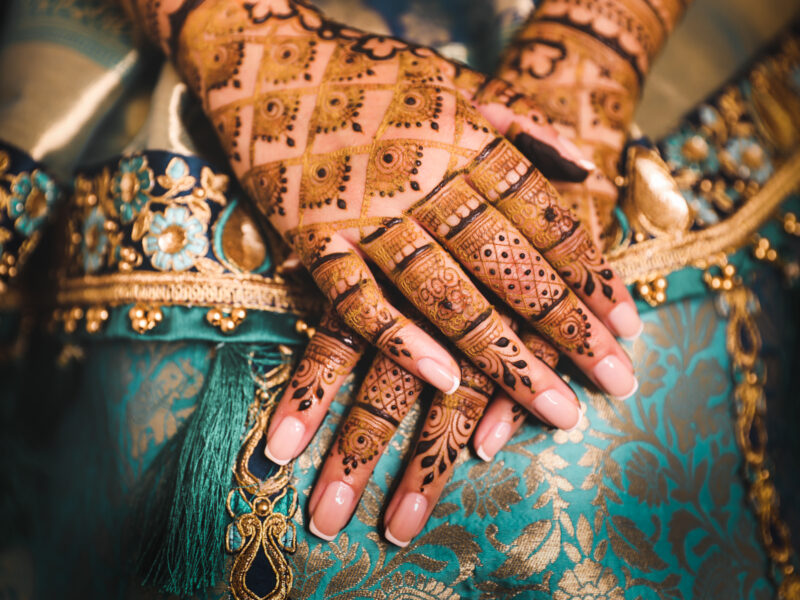
The Green Room of South Asian Weddings
If weddings were Bollywood movies, the mehndi ceremony would be the musical montage — colorful, emotional, a little chaotic, and completely unforgettable. But beyond the Instagrammable palms and dance-offs, the mehndi (or henna) night is rich with meaning, tradition, and joy.
So, What Is Mehndi?
Mehndi, the application of henna paste into intricate patterns, is more than a bridal beauty ritual. In Hindu and Muslim South Asian cultures, it’s considered an auspicious pre-wedding event meant to bless the bride (and sometimes groom) with luck, love, and fertility.
In Hindu weddings, it’s usually part of a multi-day celebration, while in Islamic traditions across Pakistan and Bangladesh, it can be a separate event, often with its own dress code, rituals, and themed decor (think: floral swings, dholkis, and glow sticks).
More Than Skin Deep
Aside from “looking like a work of art,” mehndi is believed to cool the body and calm nerves. Brides used to sit for hours — not just because the designs were elaborate, but because it was believed that the longer the mehndi took to fade, the deeper the love between bride and groom. (We can’t verify that scientifically, but we love the optimism.)
Also: the groom’s initials are often sneakily hidden in the design. It’s a fun little post-party game to make him search for them — with bragging rights at stake.
Vibes, Vibes, Vibes
A modern mehndi night can be whatever you want: traditional, Bollywood, neon disco, or eco-chic. The point is to gather your tribe and set the tone for your upcoming wedding.
Some crowd-favorite ideas:
- Henna artist corner – obviously.
- Dhol drummers and a dance floor – because aunties love to groove.
- Mehndi-inspired decor – with motifs like paisleys, mango leaves, and marigold chandeliers.
- Food stations – because no one remembers your vows, but they’ll remember your gol gappa stall.
And if you’re short on time or overwhelmed by Pinterest perfectionism, Arju can help you connect with vendors who specialize in South Asian mehndi events — from decor to dholis.
What to Wear
The bride typically goes full color bomb — greens, yellows, oranges, or even pastels if you’re riding the minimalist train. Guests usually opt for lighter lehengas, shararas, or kurtas. Comfort is key because you’ll be eating, dancing, and possibly sitting still for 3 hours with wet henna on your limbs.
Pro Tip: Ask your makeup artist to go subtle on the mehndi night. You’ll want your skin to breathe before the wedding day marathon.
Traditions, Then and Now
- Old-school: Ubtan ceremonies, singing old songs, floral jewelry, cousin-led choreography.
- New-school: Flash mobs, karaoke, pre-recorded dance reels, designer mehndi kits.
Some families still chant folk songs; others blast “Kala Chashma.” Both are valid. Do you.
So, Why Does It Matter?
In a world of bridal burnout, the mehndi is your one chance to just sit still (while being fussed over) and soak it all in. It’s a celebration of self-love, family roots, and collective joy — not just a pit stop before the big day.
Need help planning your mehndi night? Whether you’re going for traditional tabla or a neon-themed bash, Arju has South Asian wedding vendors who get it. Check out our curated list of decorators, artists, and caterers who speak your language — literally and culturally.
Learn about the Mehndi ceremony, its traditions, and what you need to do for your special event.
